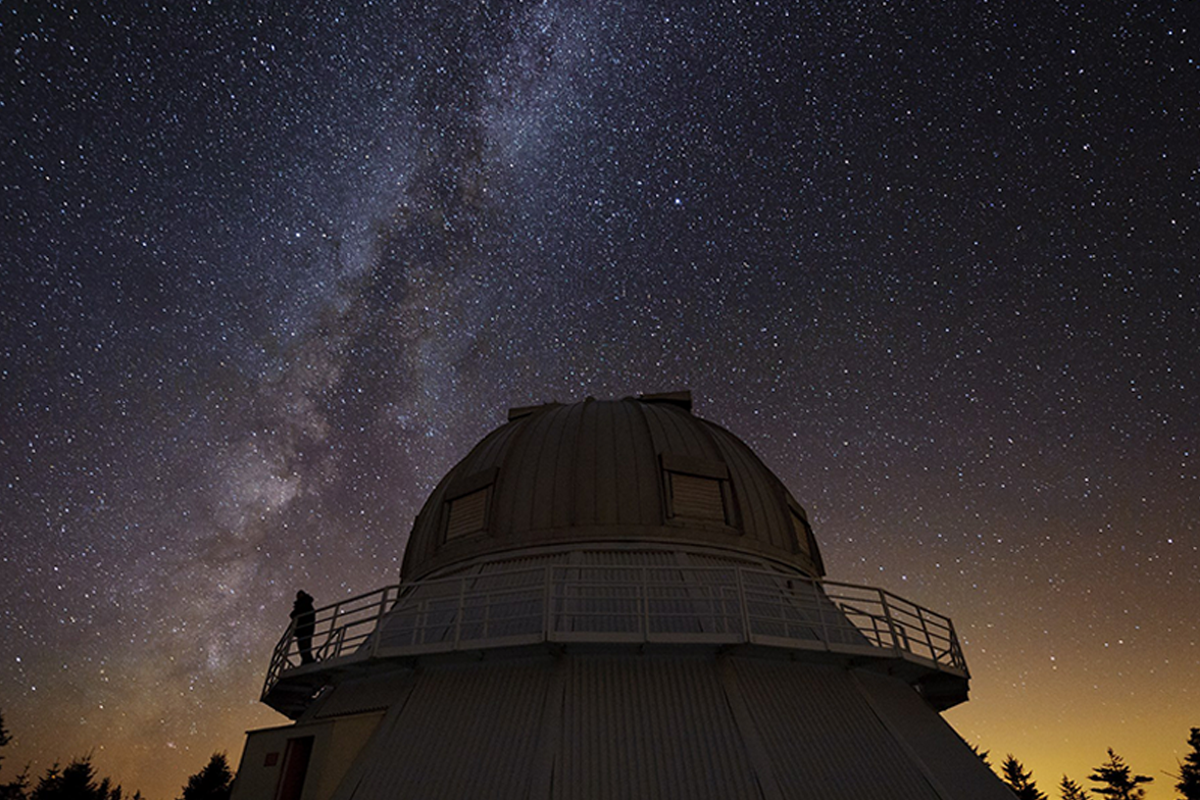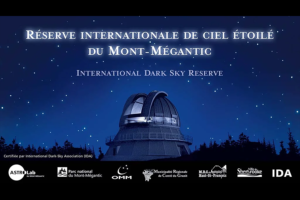International Dark Sky Reserve

The Mont-Mégantic Dark Sky Reserve is a remarkable sanctuary covering an area of almost 5500 square kilometres in the Mont-Mégantic National Park in Quebec, Canada. It is recognised for its efforts to preserve the natural darkness of the night sky by mitigating light pollution and creating an environment that allows for unobstructed stargazing and astronomical observations. This reserve is the first of its kind and serves as a testament to the importance of maintaining dark sky sites and the impact they have on science, ecology, and society.
Obtaining this certification was made possible by the adoption of a series of innovative measures to manage night-time lighting. By-laws adopted by the 34 municipalities within the reserve have helped to curb the increase in light pollution, which has more than doubled over the past 20 years, while subsidies from three levels of government and Hydro-Québec have enabled the replacement of almost 2,500 lighting fixtures, considerably reducing light pollution levels and enabling the Mont-Mégantic Observatory to return to a sky quality comparable to that which prevailed when it was created in 1978. This project has enabled the Estrie region to develop innovative expertise in outdoor lighting management, which could become a model for all industrialised countries seeking to reconcile lighting needs with concerns for energy efficiency and the protection of night-time landscapes.
In the Mont-Mégantic Dark Sky Preserve, lighting regulations are in place to ensure that artificial light is used responsibly. Shielded and directed lighting prevents light from spilling into the sky, which in turn minimises the negative effects of light pollution. By preserving the natural darkness of the night sky, the preserve creates an ideal setting for astronomers, researchers, and astronomy enthusiasts to observe celestial objects with clarity and precision.
The preservation of dark sky regions on Earth is important for:
Astronomy and Scientific Research
Dark sky sites offer unparalleled opportunities for astronomers to conduct research and observations. Clear views of stars, planets, galaxies, and other celestial objects enable scientists to gather high-quality data that contribute to our understanding of the cosmos, from studying exoplanets to investigating the origins of the Universe.
Ecosystem and Wildlife
Artificial light at night can disrupt ecosystems and wildlife behavior. Many species rely on natural light cues for navigation, reproduction, and other vital activities. Preserving dark skies helps maintain the balance of ecosystems and supports the natural behaviors of nocturnal animals. Excessive artificial light at night has been linked to disruptions in human circadian rhythms and sleep patterns. By preserving natural darkness, dark sky sites can contribute to improved human health and well-being.
Culture, Tourism, and Education
The awe-inspiring beauty of a pristine night sky has been a source of wonder for humans throughout history. Dark sky sites allow people to connect with the cosmos on a personal and cultural level, fostering a deeper appreciation for the natural world.
Dark sky preserves attract visitors who seek to experience the splendor of a clear, star-filled sky. These sites provide opportunities for educational programs, workshops, and public events that promote astronomy and science literacy.
Sustainability and Energy Conservation
Responsible lighting practices in dark sky preserves reduce light pollution and unnecessary energy consumption, leading to cost savings and a smaller environmental footprint.
The Mont-Mégantic Dark Sky Reserve stands as a beacon of environmental stewardship, scientific progress, and cultural enrichment. By preserving the integrity of natural darkness, such sites contribute to the interconnected well-being of ecosystems, wildlife, humans, and the broader universe. Preserves such as Mont-Mégantic’s underscore the global importance of safeguarding dark skies for the benefit of current and future generations.
International Dark Sky Association (IDA)
The IDA is the only international organisation whose mission is to raise awareness of the various problems associated with light pollution, find the solutions needed to limit its impact, and equip the international community to apply appropriate control measures. The IDA has over 50 regional chapters and more than 11,000 members in 70 countries.
Definition of an International Dark Sky Reserve (by the IDA)
A public or private area (the heart of the reserve) with an exceptional or excellent quality of starry sky and nocturnal environment that is specifically protected, for its scientific, environmental, educational, cultural and/or general public mission, over a large area peripheral to the heart of the reserve.
